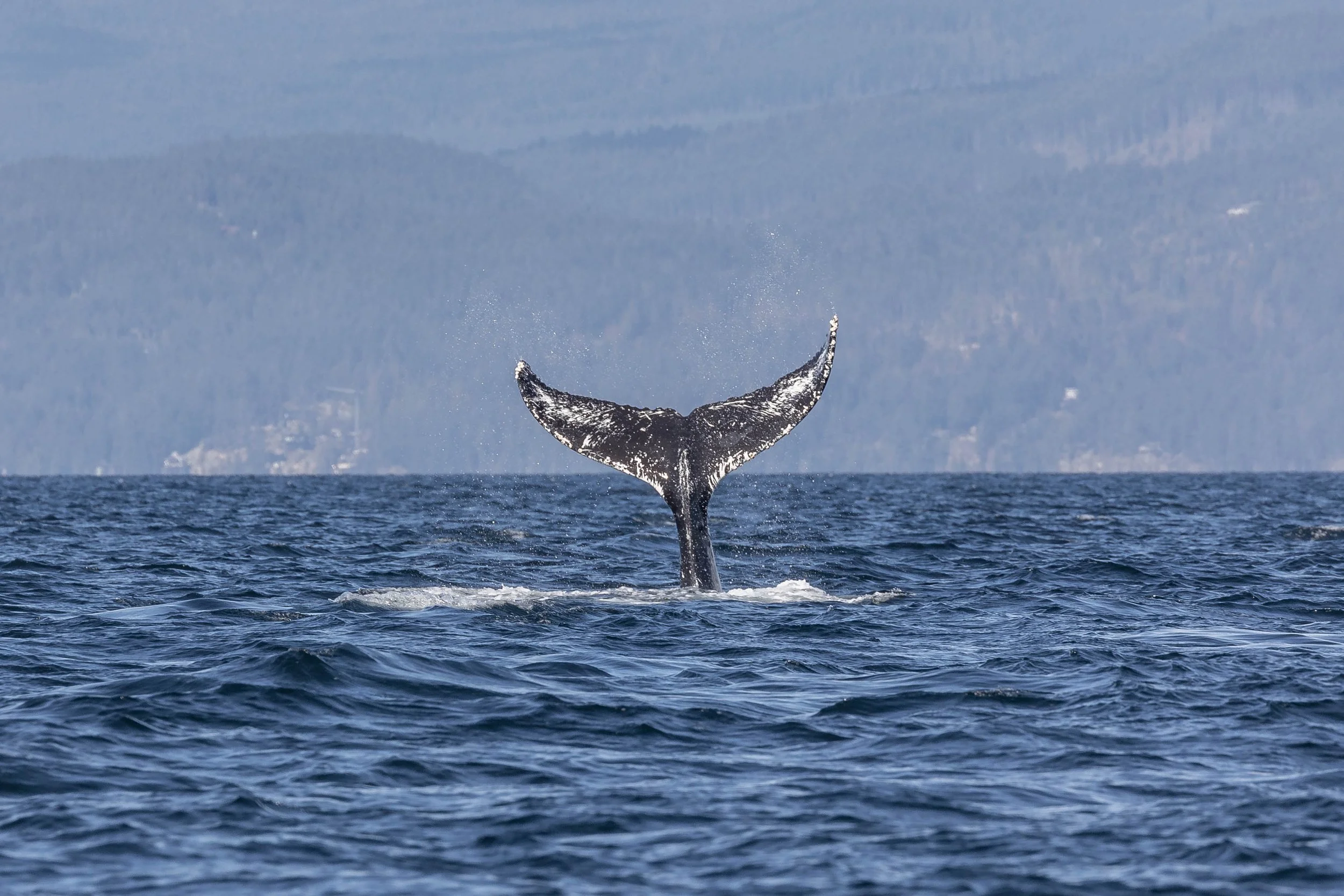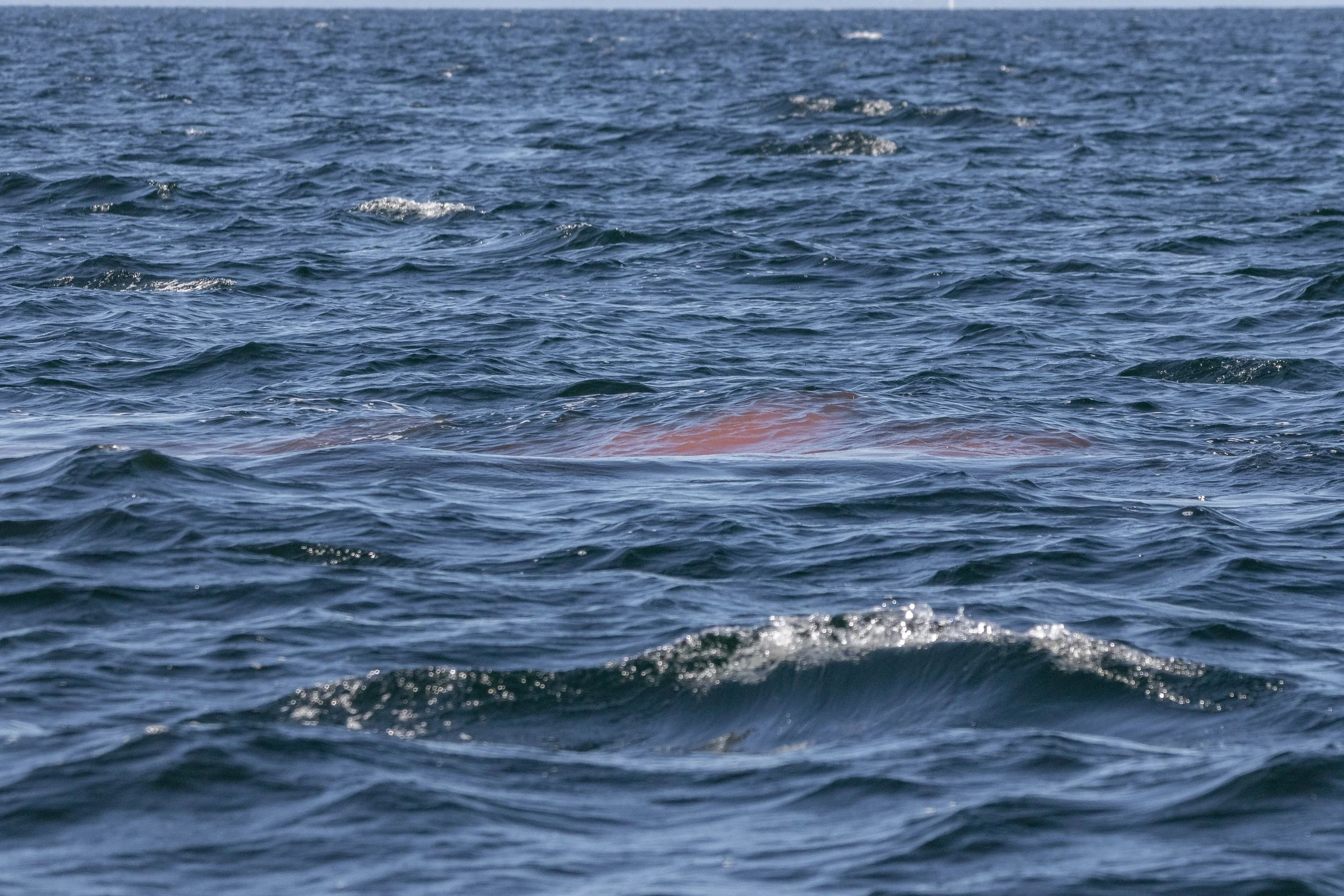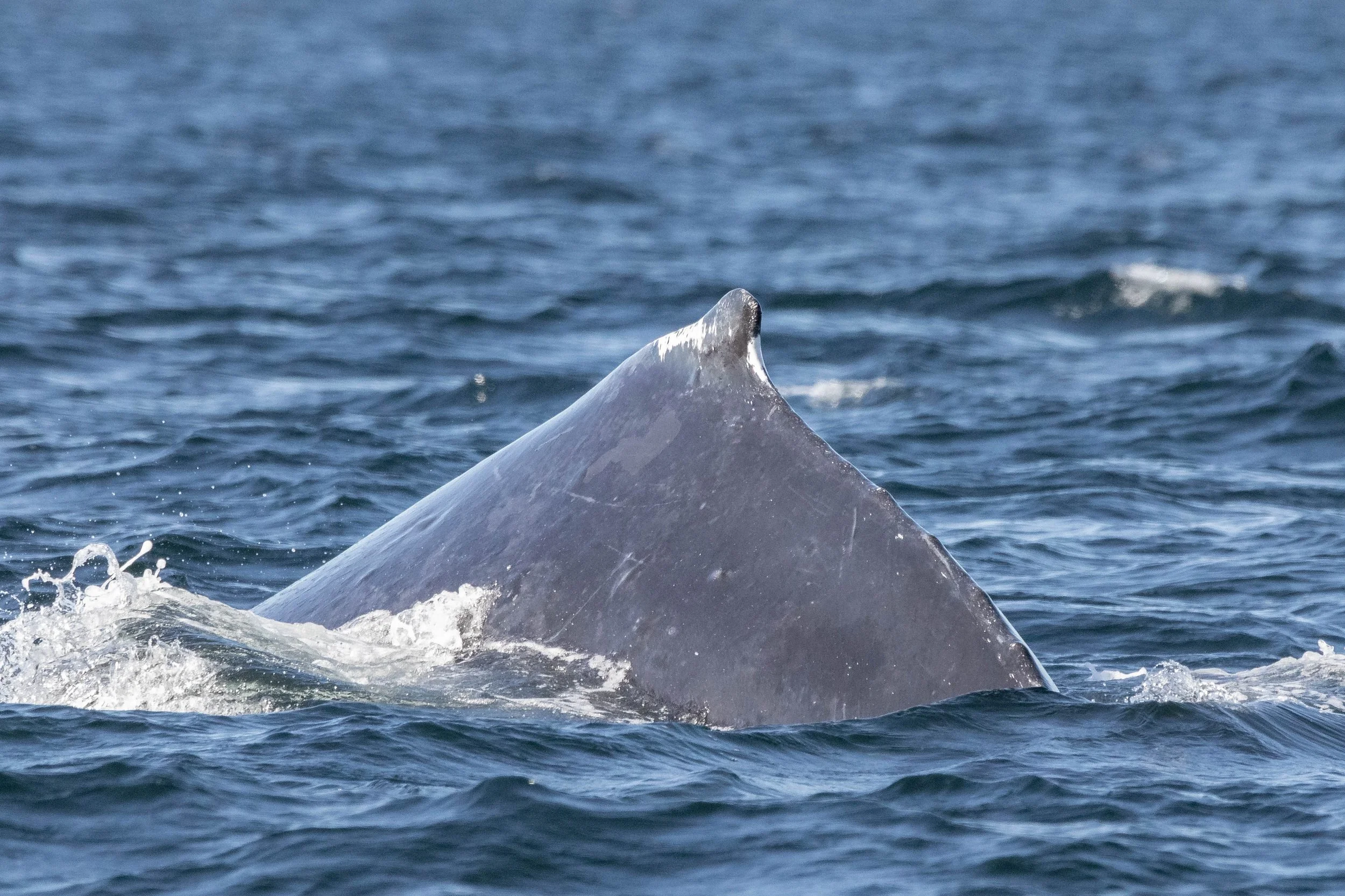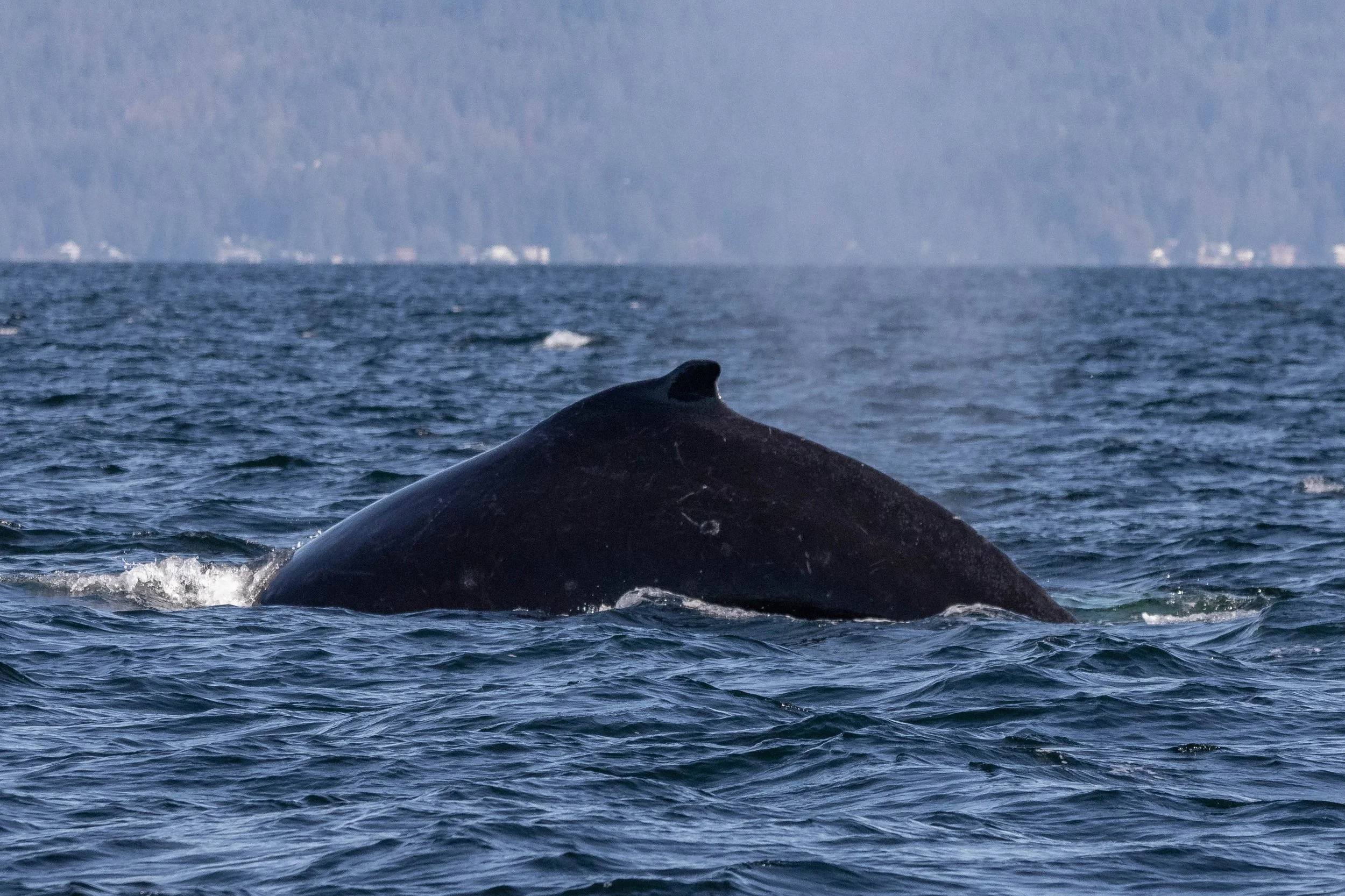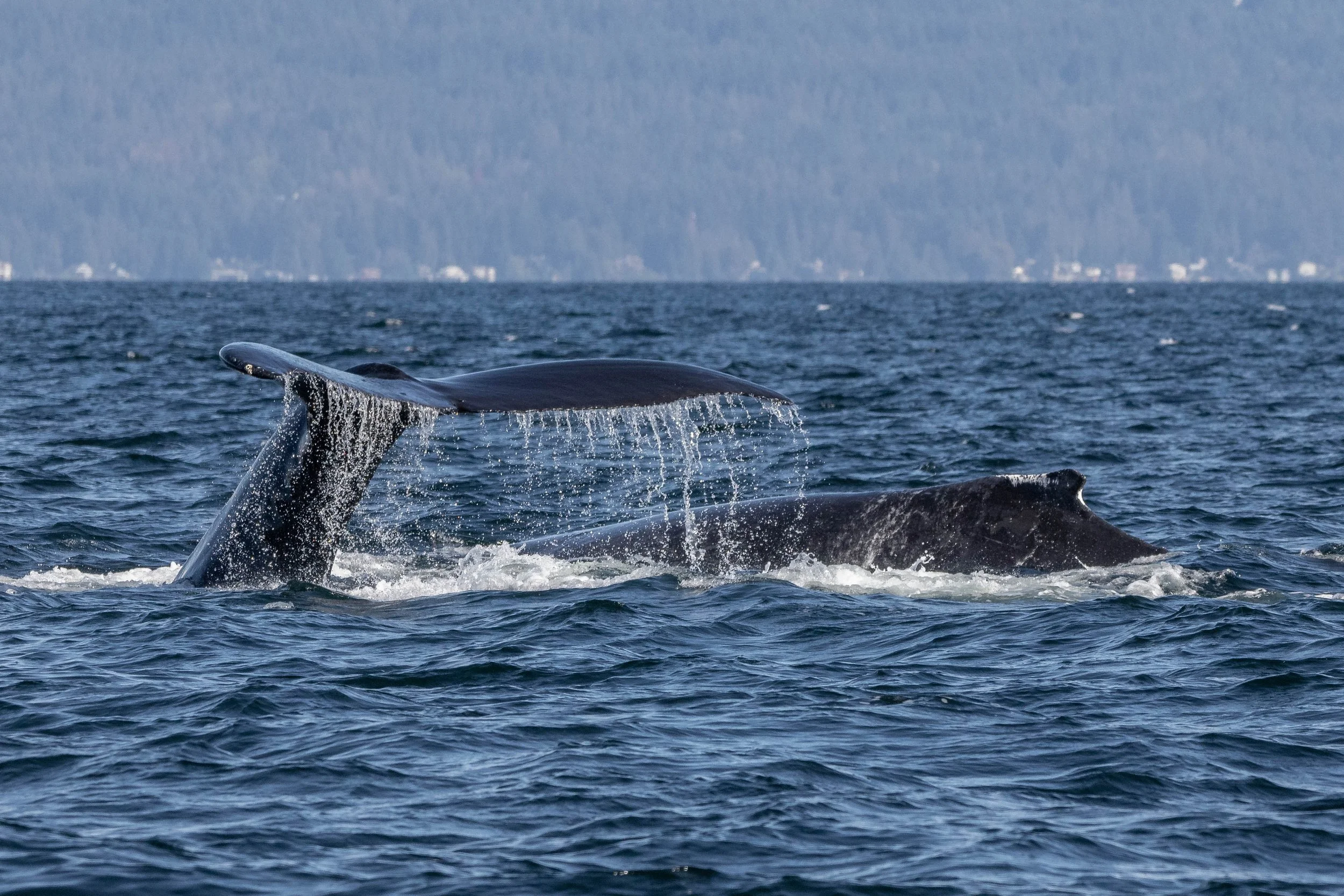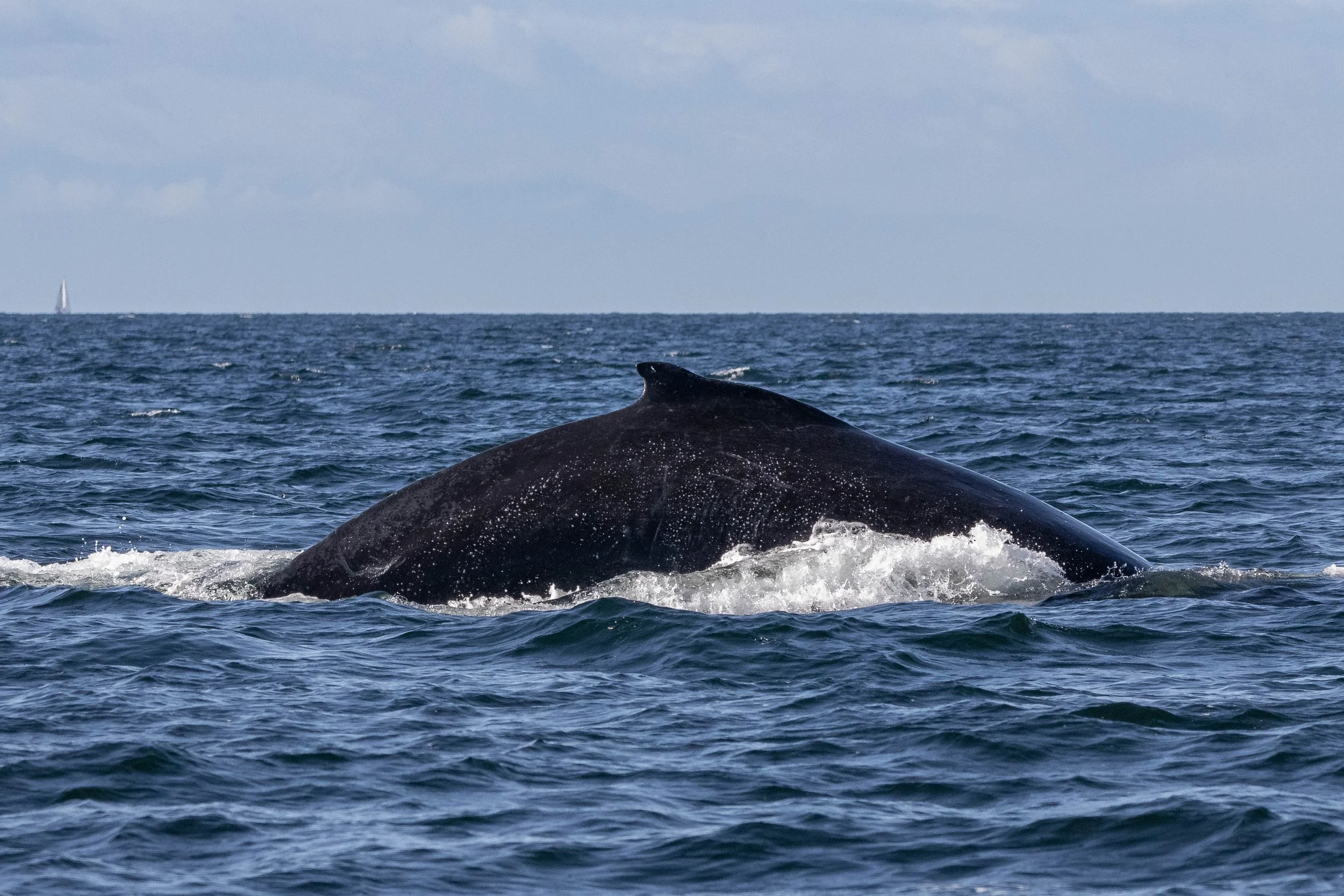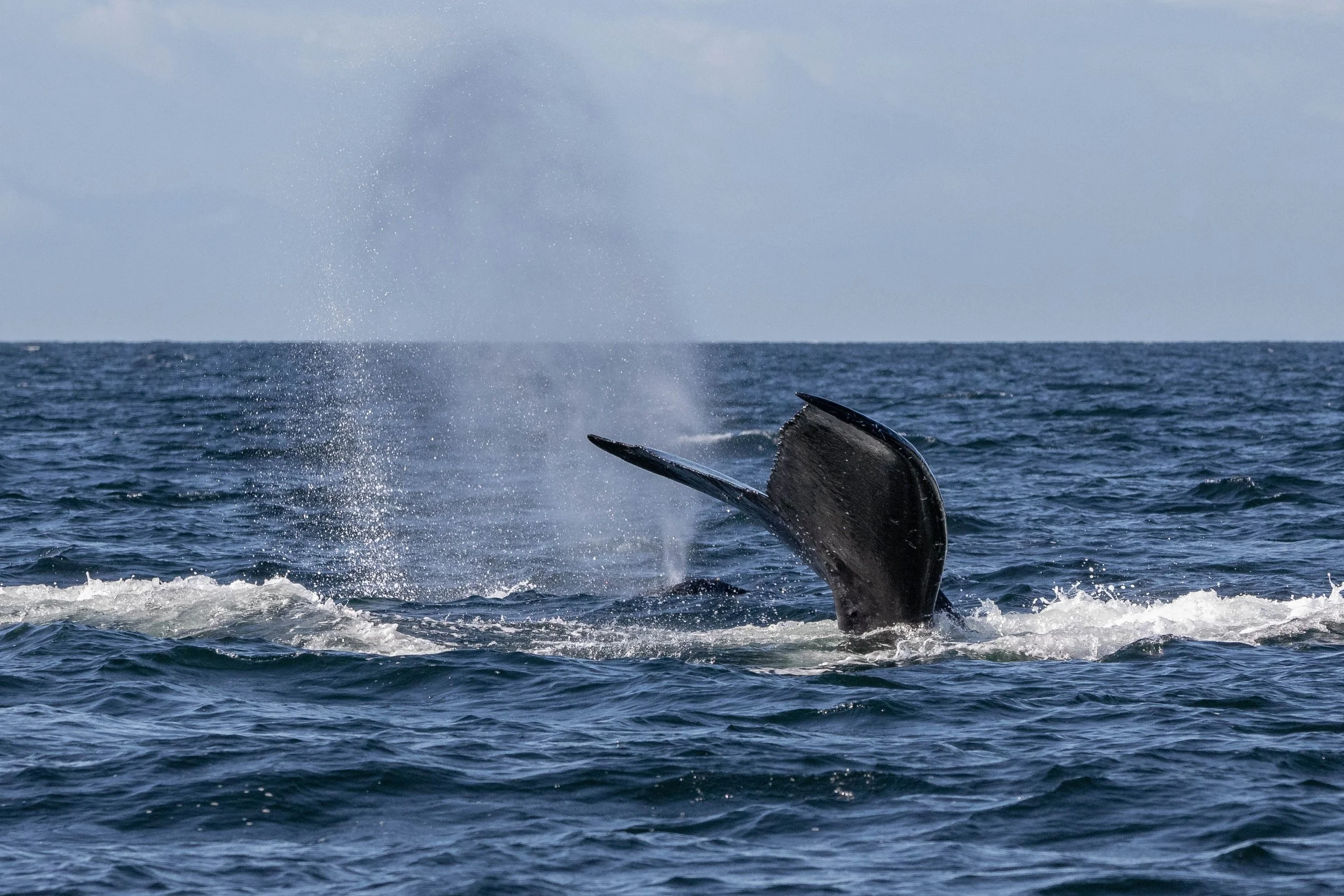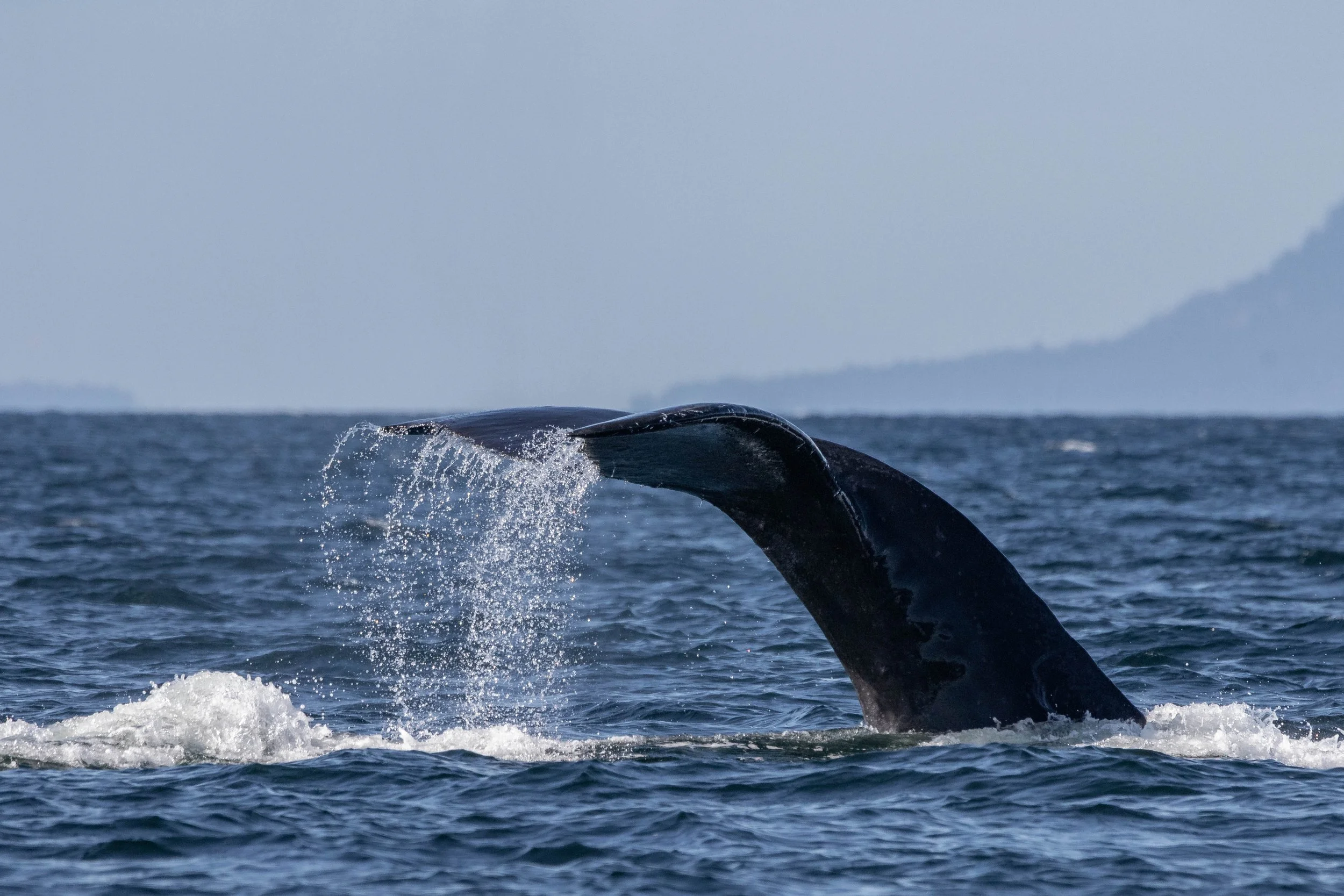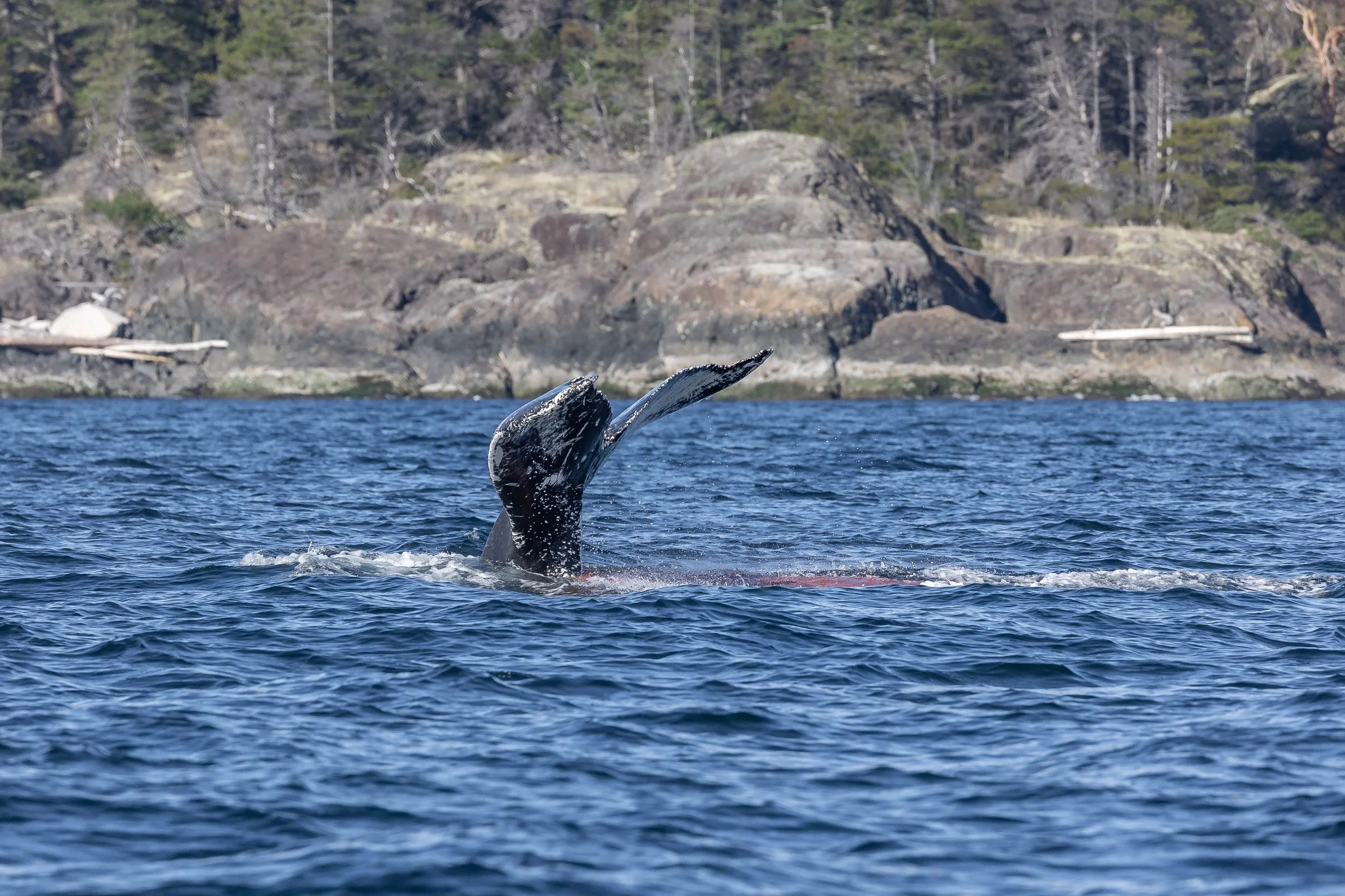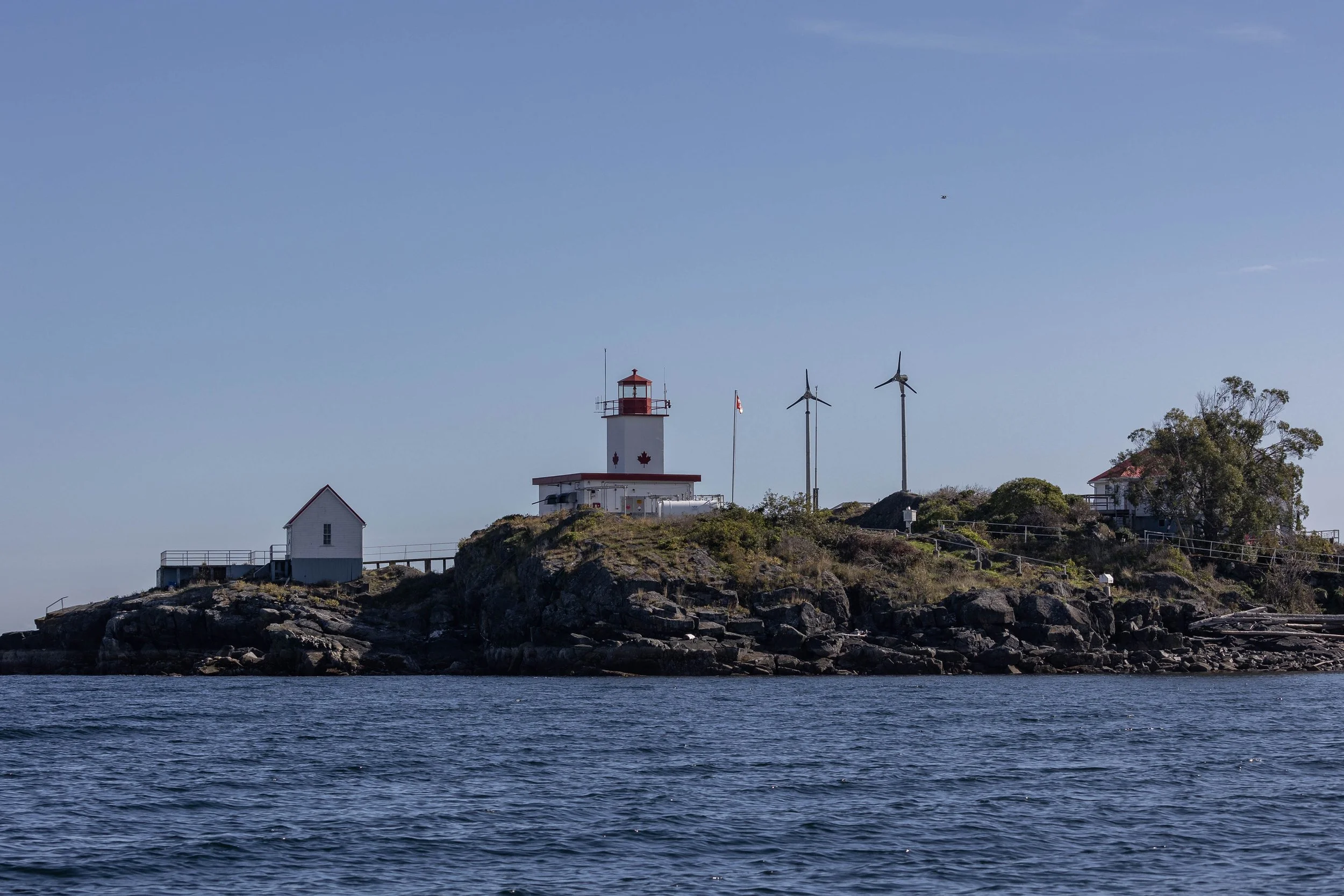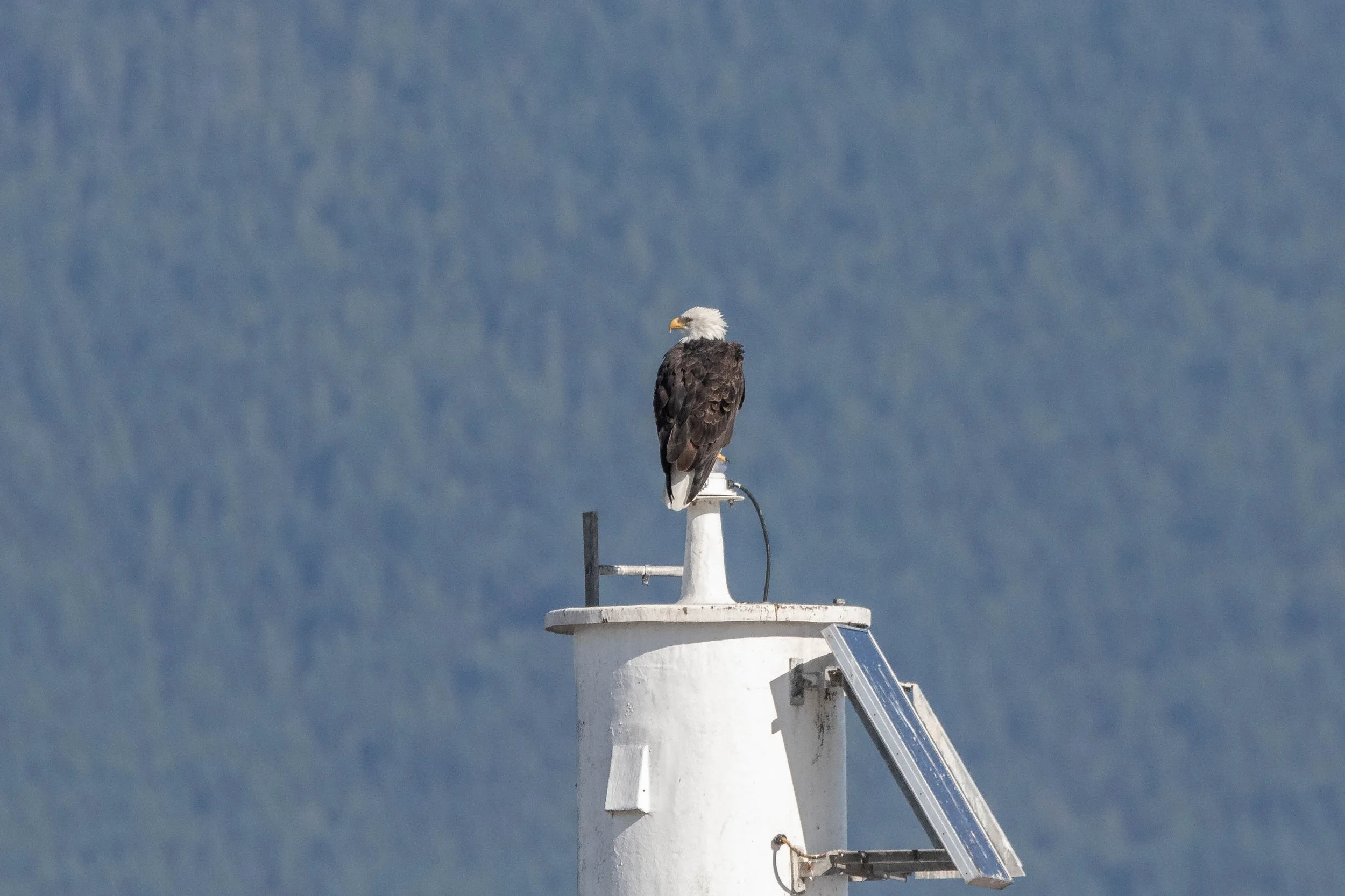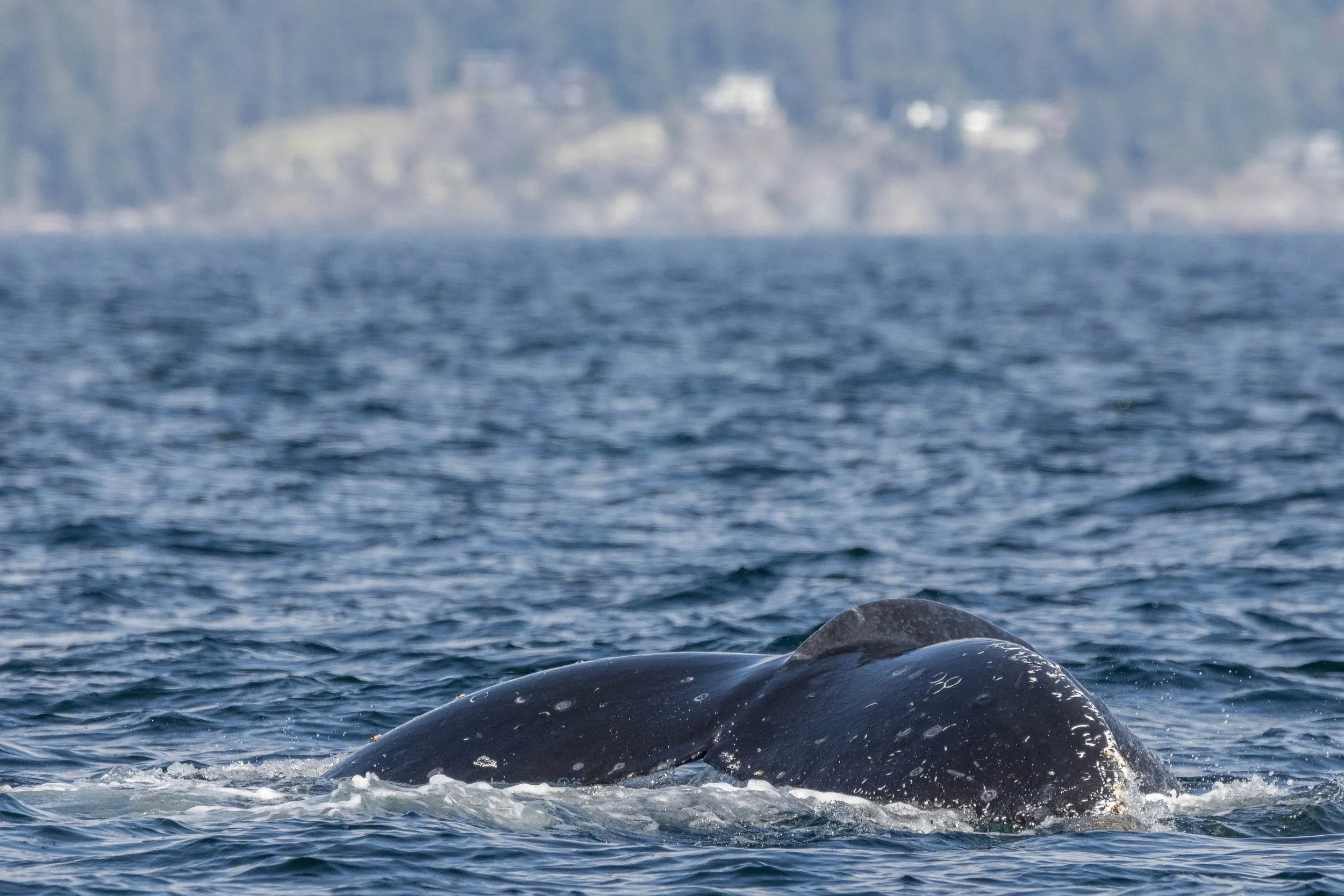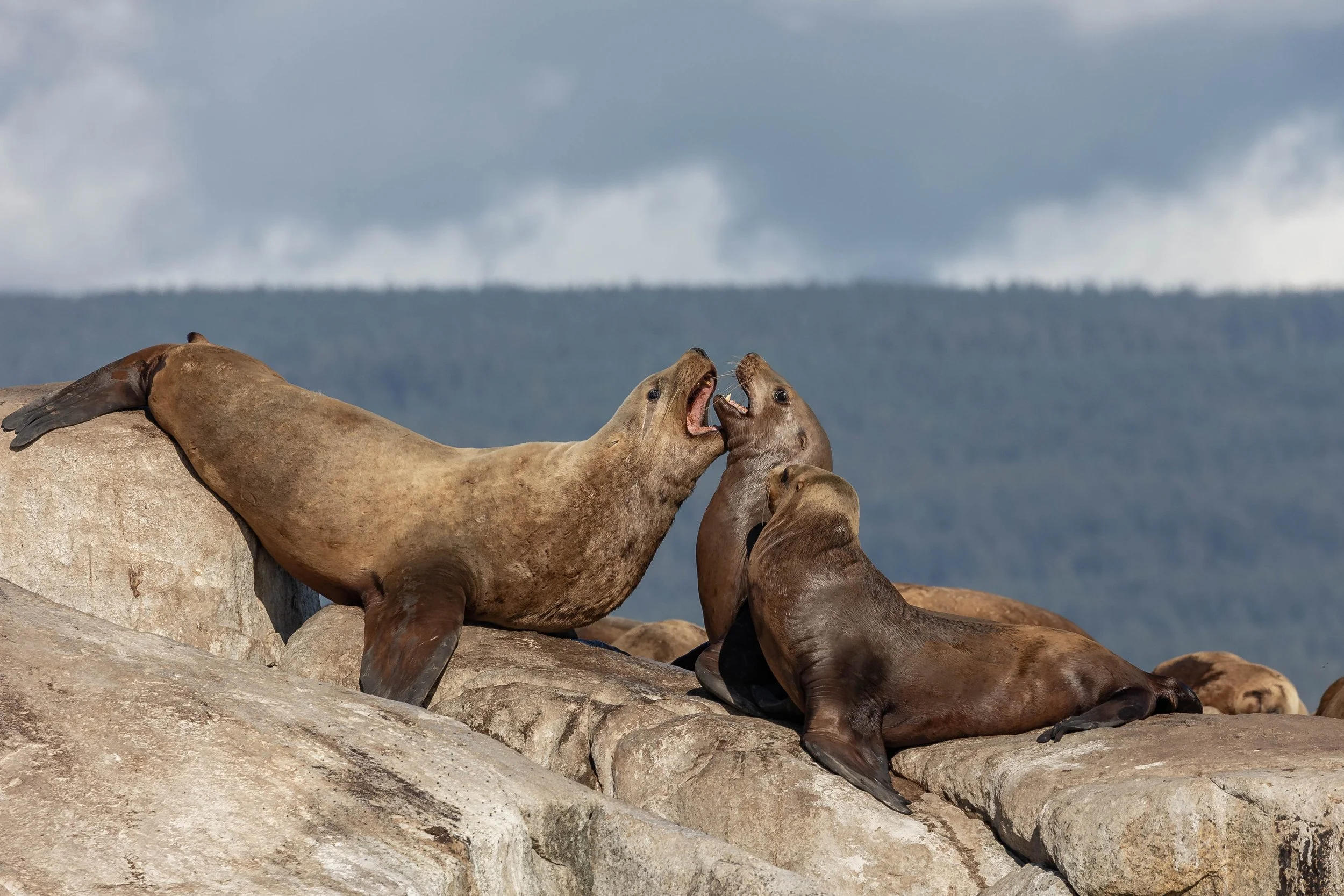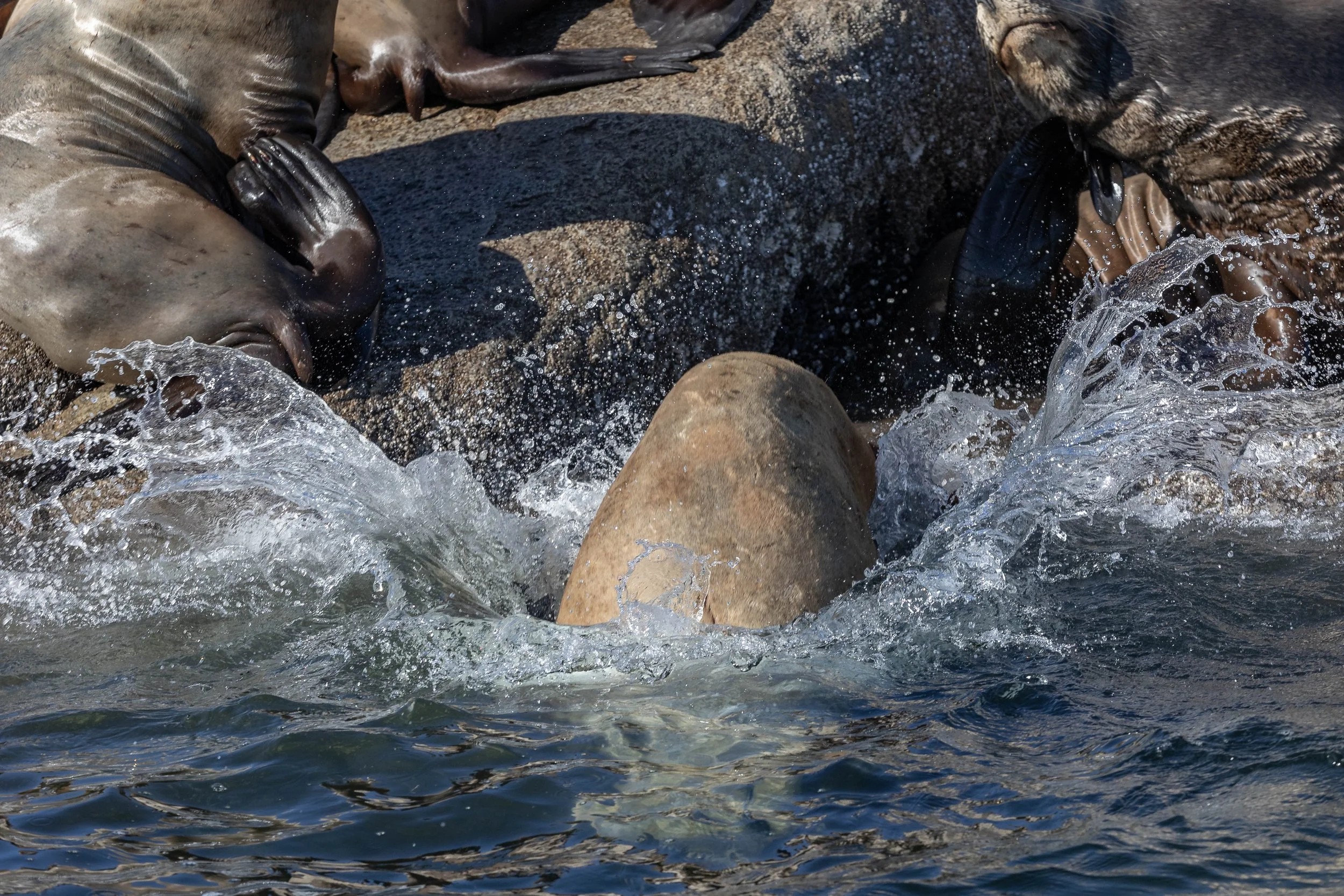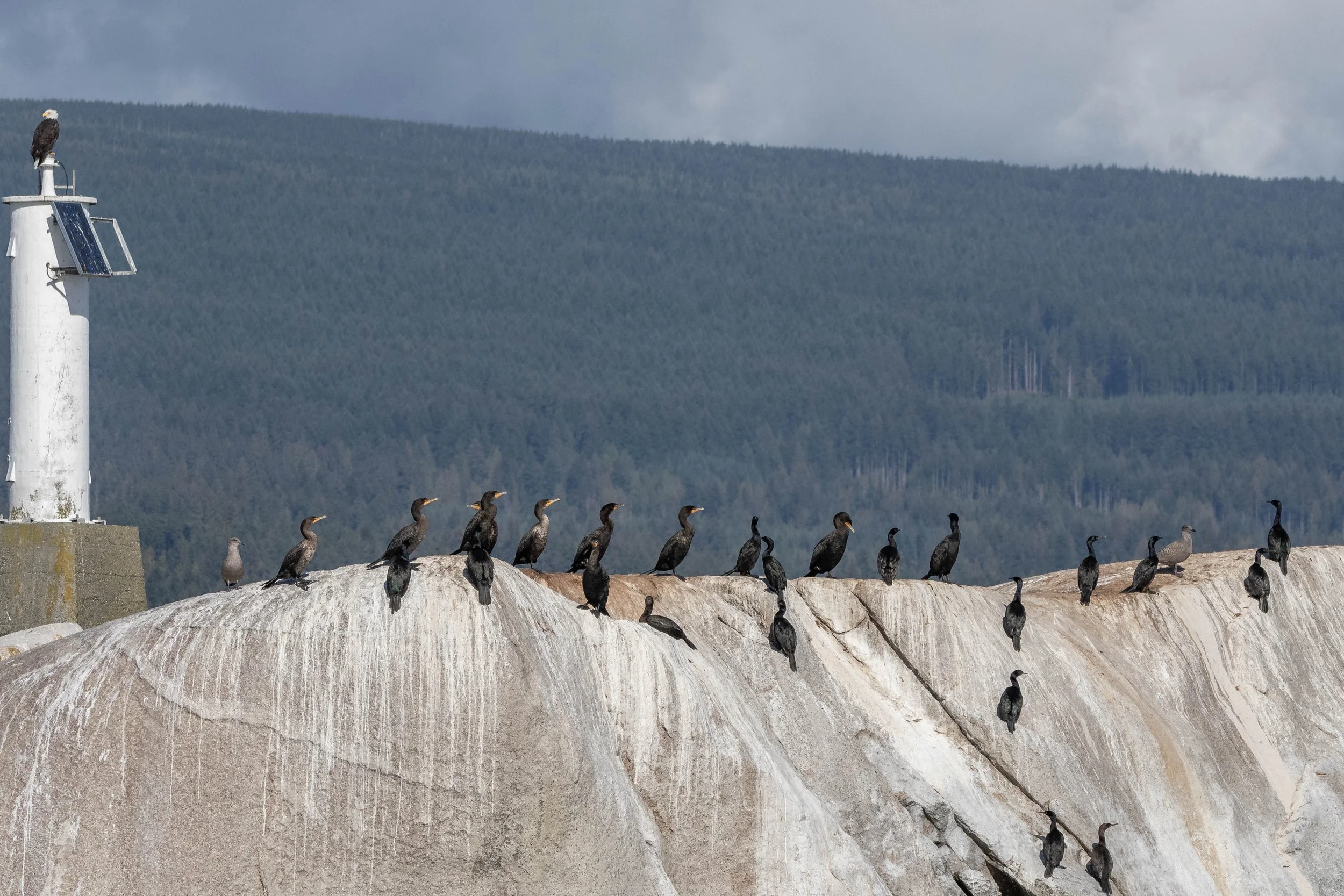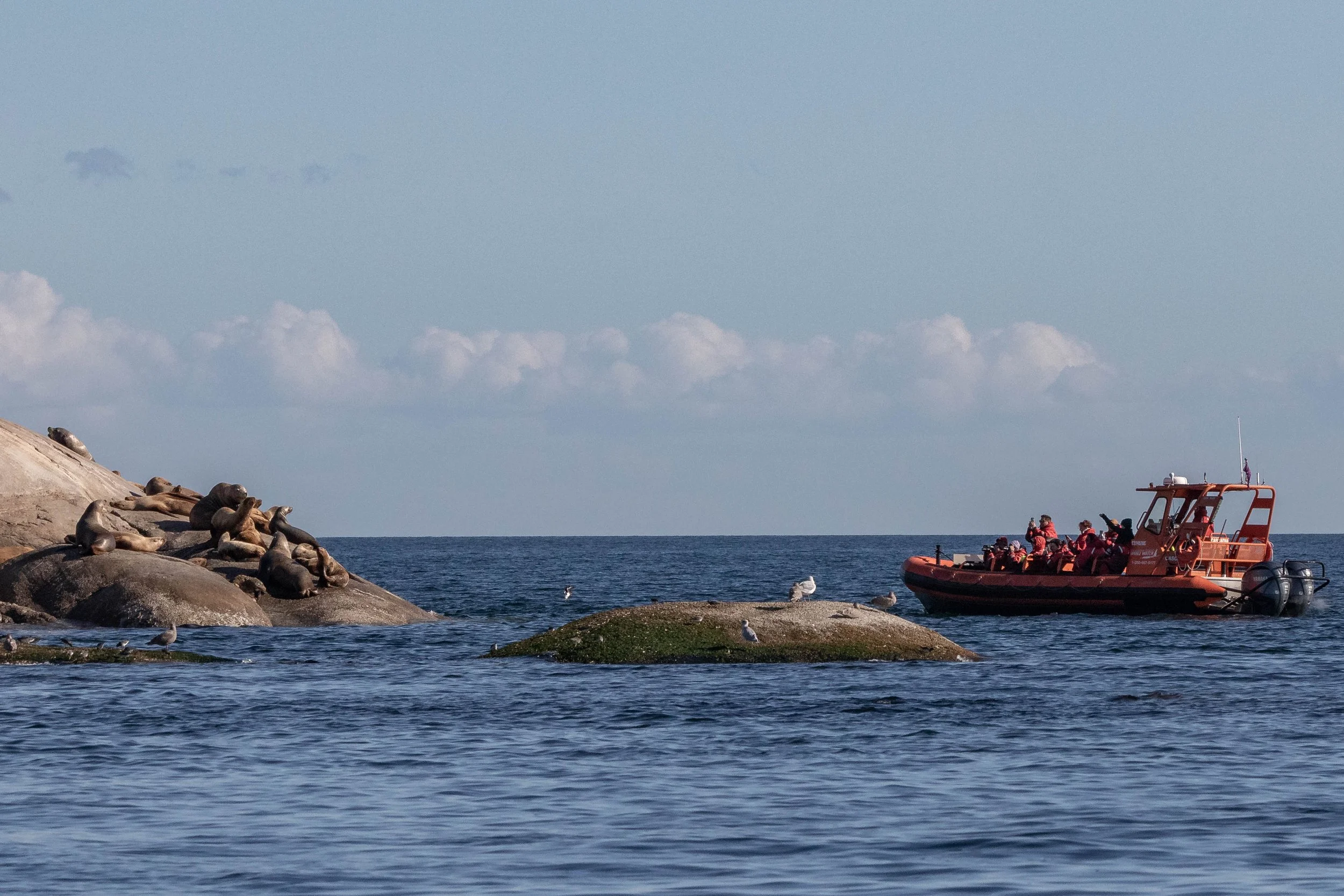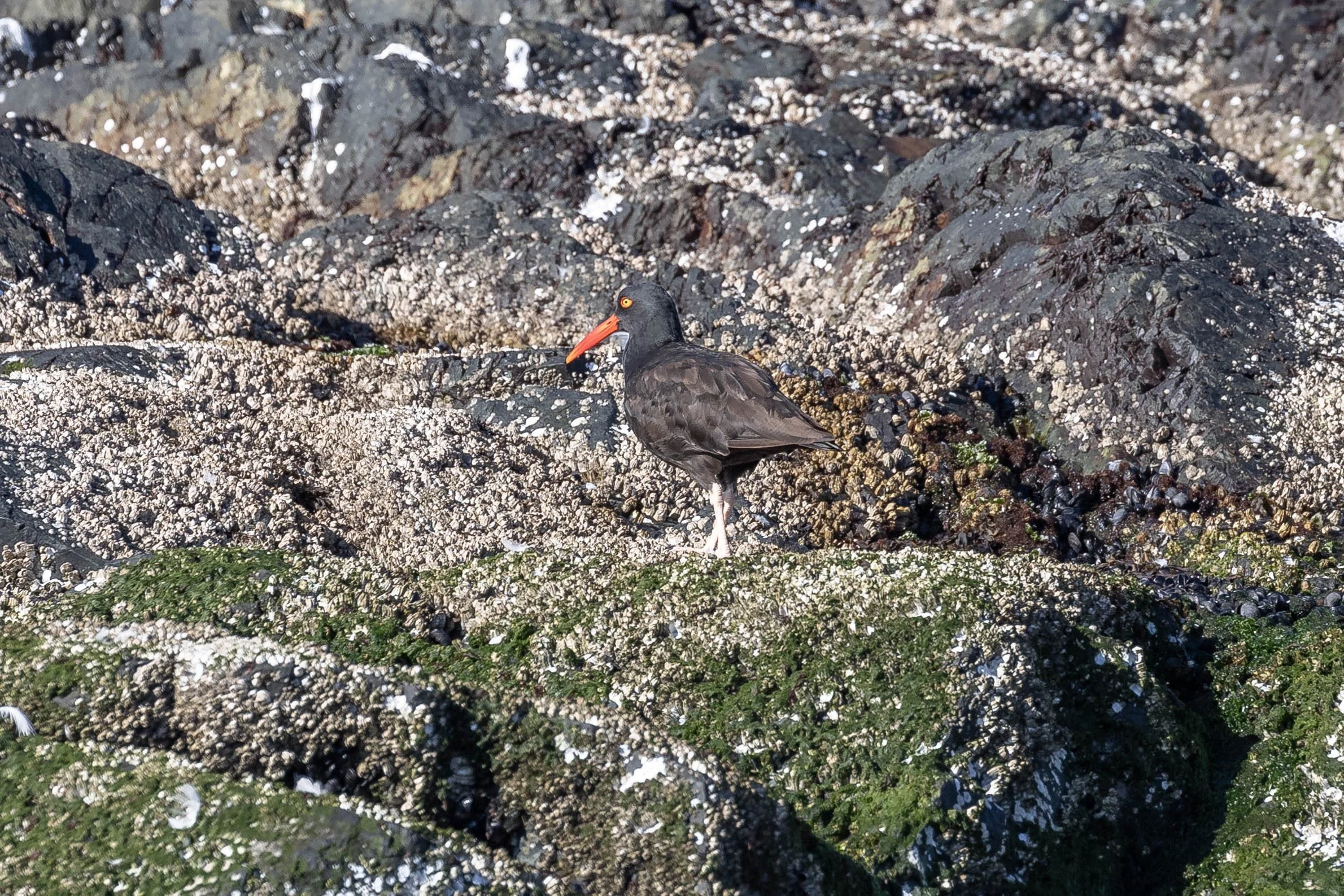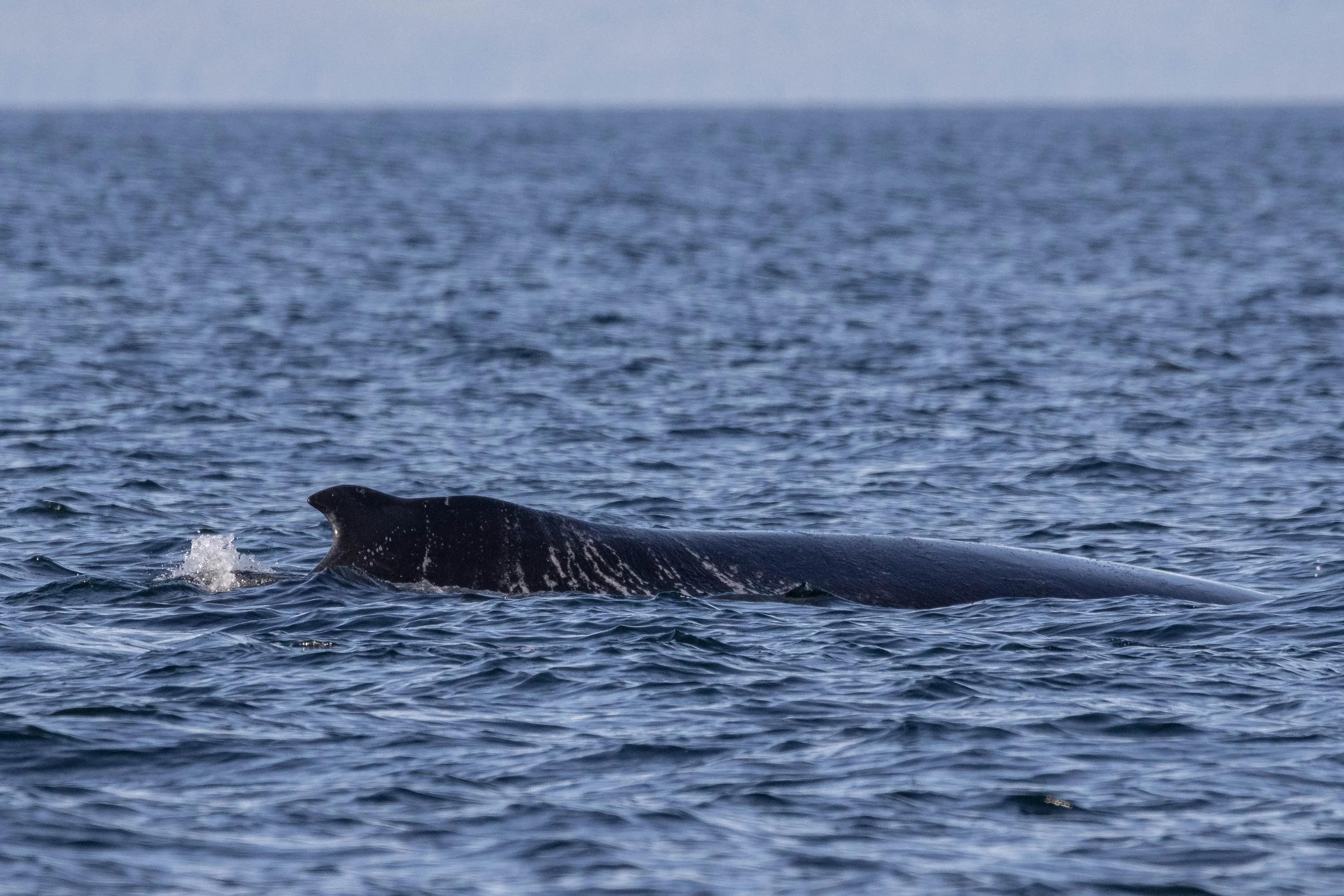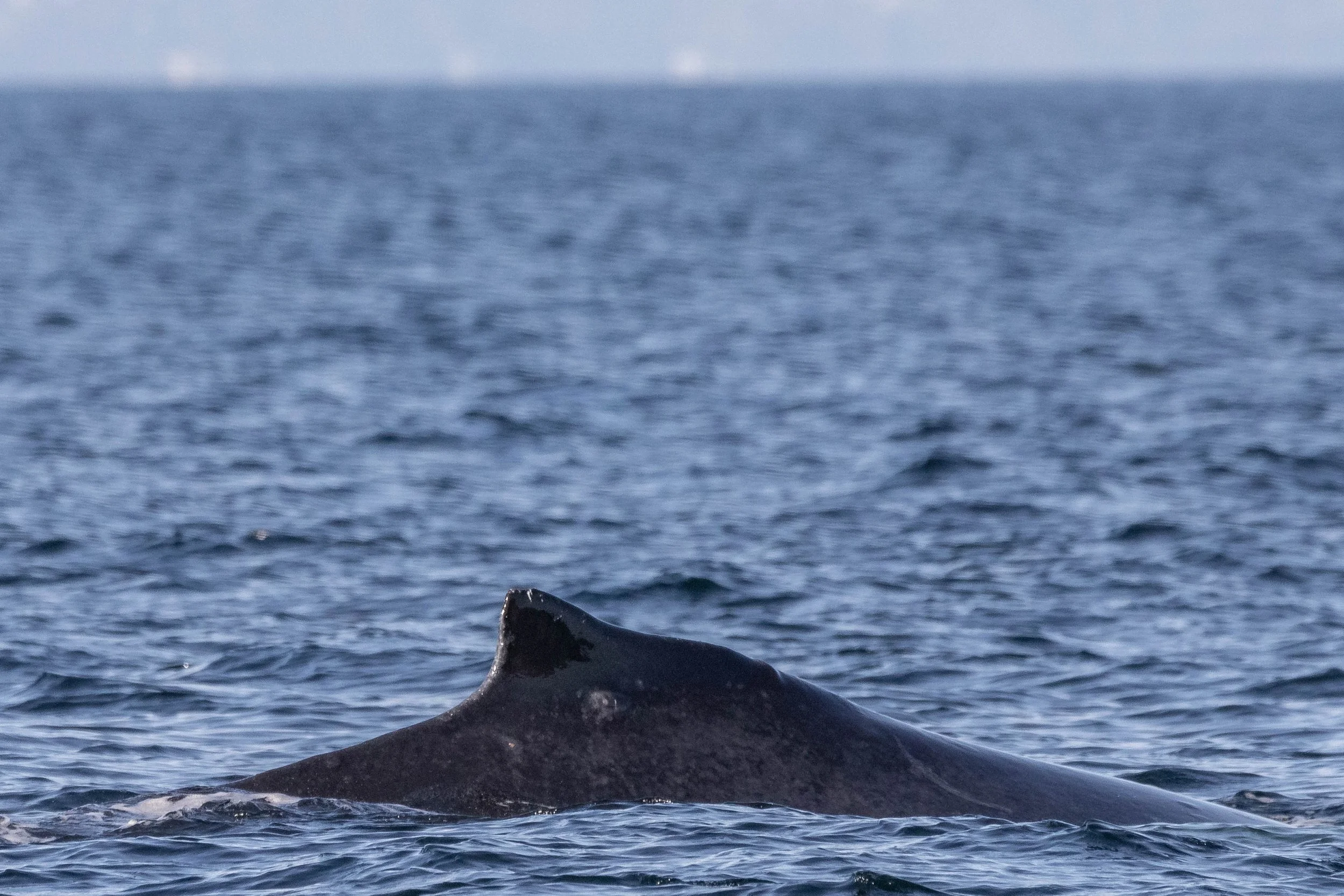October 2, 2024 - A Whales, Wings, and Waves Adventure
We left the dock at Nanaimo on a beautiful morning, full of anticipation for the day ahead. Our two boats, brimming with eager guests, set out into the calm waters of the Strait of Georgia, a region known for its rich biodiversity and stunning marine life. With the sun shimmering on the waves, we knew we were in for a great adventure.
Our first sighting came swiftly—a group of iconic black and white fins cutting through the water. As we drew nearer, it didn’t take long to ID them: Southern Resident Killer Whales. This critically endangered population, with only 74 individuals left, faces immense challenges, from declining salmon stocks to human-induced noise pollution. Our policy, and that of many responsible whale-watching operators, is not to linger with these whales to minimize any disruption to their already fragile existence. We quickly sent out a report to warn commercial vessels of their presence, helping to ensure the whales’ safe passage through busy shipping lanes. As much as we wished to stay and watch, their best chance at recovery lies in minimizing human interference.
With the report sent, we continued our search, soon rewarded by the sight of two humpback whales surfacing in the distance. This was a pair we were familiar with—Chinook (BCY0996) and Graphite (BCX2077). These two whales have been seen frequently in the area, and today, they seemed to be in no rush, slowly circling the waters, likely feeding beneath the surface.
As we watched from a respectful distance, Chinook treated us to a tail flick—an energetic movement that sent a spray of water into the air, much to the delight of everyone on board. Then, something even more exciting happened: humpback poop! Now, while this might not sound like the highlight of a whale-watching trip, it's actually a fantastic sign. Whale defecation is a key part of the marine ecosystem, as it releases nutrients that support plankton, the base of the ocean food web. Chinook’s and Graphite’s well-fed appearance, along with the presence of whale poop, suggested that they were both thriving in these nutrient-rich waters.
Leaving Graphite and Chinook behind, we continued our tour, and soon enough, our open boat made another humpback sighting. This time, it was Lego (BCY1061), also known as T-rex. And let’s just say, Lego was having quite the digestive day! In what may have been a record, Lego defecated three times during two surfaces. As unusual as it might sound, this was another positive sign that these whales are finding plenty to eat.
Meanwhile, the covered boat was off observing another familiar humpback, Bandit (BCX2081). Though Bandit wasn’t quite as "poopy" as Lego, there were still signs of feeding behaviour in the area. As our crew went through the photos taken on the trip, we noticed something bittersweet: Bandit bore scars from a past entanglement. Entanglement in fishing gear is one of the leading causes of injury and death for humpback whales, and while Bandit appeared to be healing, it was a stark reminder of the dangers these animals face even in the seemingly open ocean.
No trip through the Strait of Georgia would be complete without a visit to the White Islets, where the local pinnipeds love to hang out. Steller Sea Lions lounged on the rocky outcrops, while Harbour Seals basked nearby, perfectly content in the midday sun. The air was filled with the calls of cormorants, and to top it off, a Bald Eagle perched on the islets marker, a powerful symbol of the wilderness we were surrounded by. It’s moments like these that remind us how truly interconnected this ecosystem is—from the smallest shorebirds to the largest whales, each species plays its part.
Just as we were making our way back toward Nanaimo, thinking the day couldn’t get any better, we spotted one more pair of humpbacks. Their dorsal fins broke the surface in unison, and we quickly identified them as Wisp (BCX1333calf2021) and Malachite (BCX1210calf2021), two younger whales we’ve seen frequently this year. It was the perfect way to cap off a spectacular day on the water.
As we docked back in Nanaimo, we couldn’t help but reflect on the diversity of life we had witnessed—from the playful humpbacks, the resilient pinnipeds, and the ever-present birds. The ocean, with all its beauty and complexity, never ceases to amaze us.
A big thank you to our Marine Naturalists for capturing the magic of the day—Cheyenne Brewster and Vanessa Vereschahen. Their photos allow us to relive these moments and share the experience with others, even after we leave the water.
Chinook (left) and Graphite (right) diving together. Photo by Cheyenne Brewster.
The underside of Chinook's tail flukes. Photo by Cheyenne Brewster.
Chinook flicking her tail. Photo by Cheyenne Brewster.
Graphite going for a dive. Photo by Vanessa Vereschahen.
The underside of Graphite's tail flukes. Photo by Vanessa Vereschahen.
A pool of poop left behind by Graphite. Photo by Vanessa Vereschahen.
Chinook arching for a dive. Photo by Vanessa Vereschahen.
Graphite arching for a dive. Photo by Vanessa Vereschahen.
Graphite lifting his tail beside Chinook's dorsal fin. Photo by Vanessa Vereschahen.
Chinook giving a fluke waterfall. Photo by Vanessa Vereschahen.
Graphite's dorsal fin has that unique spot on it. Photo by Vanessa Vereschahen.
Graphite diving with Chinook behind him. Photo by Vanessa Vereschahen.
Chinook flicking her tail. Photo by Vanessa Vereschahen.
Graphite giving a fluke waterfall. Photo by Vanessa Vereschahen.
A rainblow from Graphite. Photo by Vanessa Vereschahen.
Lego defecating at the surface as they dive. Photo by Cheyenne Brewster.
The underside of Lego's tail flukes. Photo by Cheyenne Brewster.
A lighthouse on Merry Island. Photo by Cheyenne Brewster.
Bandit's dorsal fin. Photo by Vanessa Vereschahen.
A Bald Eagle on the marker on the White Islets. Photo by Vanessa Vereschahen.
Bandit going for a dive. Photo by Vanessa Vereschahen.
Fighting Steller Sea Lions on the White Islets. Photo by Cheyenne Brewster.
A sea lion diving into the water. Photo by Cheyenne Brewster.
Cormorants on the islets being watched over by a Bald Eagle. Photo by Vanessa Vereschahen.
Look at the size difference! An adult male vs a juvenile. Photo by Vanessa Vereschahen.
A Steller Sea Lion watching from the water. Photo by Vanessa Vereschahen.
Open boat Cascadia watching the sea lions. Photo by Vanessa Vereschahen.
A Black Oyster Catcher trolling the shoreline. Photo by Cheyenne Brewster.
Malachite's dorsal fin. Photo by Vanessa Vereschahen.
Wisp's dorsal fin. Photo by Vanessa Vereschahen.



